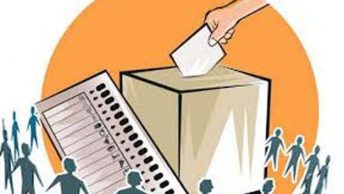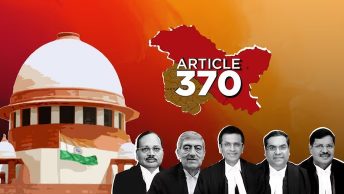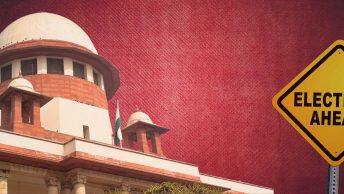[Ed Note: This is a two-part series on anti-defection law by our Senior Analyst, Shanthan Reddy. Part I introduces defection law to the readers and explains how the merger exception has been misused to facilitate defection. Part II specifically looks into the examples of Telangana and Goa to argue how the merger exception is being misused in state level politics.]
Introduction
The anti-defection law present in the 10th Schedule of the Indian Constitution was introduced via the 52nd Amendment Act, 1985 (“the Act”). The Act primarily aims to prevent defections from one political party to another, particularly when the motive behind such change in parties is to gain power or monetary benefits. However, at the level of constitutional philosophy, the Act brought in a fundamental shift as this was the first time the Constitution recognized parties as political entities and actively tried to dictate on how political parties should be disciplined and what is expected out of them in a democratic setup. Further, by prohibiting and penalizing the shifting of a representative from the party on whose symbol they were elected, the Act implies that elections in India are party based and not candidate based i.e. voters vote based on ideological and policy lines of a party. It follows the logic that the representatives stand in the elections on the ideological and policy goals that the party represents and hence their election is to be attributed to these ideological and policy goals. Thus, when a member defects they essentially give up on these ideological and policy goals, thereby losing their membership in the House.
The provisions of anti-defection law in India have been contested on multiple fronts. One such area of contestation is the split and merger exceptions to defections contained in paragraph 3 and 4 of the 10th Schedule. The rationale behind allowing for such splits and mergers, as explained by the then Law Minister, Ashok Kumar Sen, was a compromise between the right of dissent and the primary necessity for preserving party discipline.[i] However, while debating the Act, certain members argued that these exceptions legalized group defection while punishing individual indiscretion.[ii] This was recognized as a major loophole in the Act.[iii]
Under the split exception, if at least one-third members belonging to the same party in the same legislature defect to another party, all such members would be exempted from being penalized for changing parties. However, as per the Supreme Court, the spilt in the ‘legislature party’ must have arisen from a split in the ‘original political party’. While ‘legislature party’ in the context of the 10th Schedule includes members of the house belonging to the party, ‘original political party’ is a reference to the political party itself. For example – the members of the INC in the Telangana legislative assembly make up the ‘legislative party’ and the original political party they belong to is the INC. Thus, as per the Supreme Court’s ruling, for the members of a particular house to make use of the spilt provision, it is a pre-condition that there is a split in the organisational wing of the party in the first place.
The merger exception as per Paragraph 4(2) mentions that a merger is deemed to occur when “two-thirds of the members of the legislature party concerned have agreed to such a merger” into another political party. Thus, a textual understanding gives rise to an understanding that two-third members belonging to that party in that legislature must agree for a merger to be effectuated. However, it is argued that the ruling of the Supreme Court with respect to the splits is also applicable to mergers. If that is taken into account, for mergers to be effectuated the acceptance of two-third members of that house is to be preceded by a merger of the organisational wing of the party. However, in practice acceptance by two-third members of the legislature party has been considered enough for a merger to take place.
The spilt provision was removed via the 91st amendment act of 2003, hailing it to be more “misused than used”. The merger exception stayed intact as it was perceived to have not created any ‘serious problem’ in its application. This two-post series aims to highlight this misconception of the legislators. This explainer will demonstrate how the merger exception, like the split exception, provides an opportunity for leaders to escape the clutches of anti-defection laws, while at the same time defeating the objective of the law.
Misuse of the Merger Exception
The invocation of the 1969 Congress split as a defence of split and merger exceptions reveals that the legislature conceived these provisions to be put to use only under exceptional circumstances where members of the same party want to pursue different ideological and policy goals.[iv] The discussion on the introduction of the 91st Amendment, where the primary ground for the removal of the split exception was based on the fact that a majority of the splits were not on ‘ideological grounds’, but were rather done to accomplish personal and political ambitions, further clarified this premise. It is reasonable to infer from this that the merger exception was retained to provide only for such exceptional situations wherein a large group of members of a political party felt aligned to the ideology of a different political party and thus wanted to merge with it.
For the purposes of this explainer, we are assuming that the Parliament did not expect the merger exception to be misused given the high threshold and the lack of precedent. However, for smaller parties at state or national level, the two-third rule does not pose as big a hindrance to defection as is assumed by the Parliament. For example, if there are 60 members of a party in a particular legislature, for it to make use of the merger exception, at least 40 members would have to defect. Practically speaking, such a scenario is quite unlikely to occur. However, if there are 10 members of a party in that legislature, for it to make use of the merger exception, only 6 members would have to defect. Unlike 40, 6 members of a party defecting is not an impossible or an unlikely situation. Further, this exception can easily be exploited in smaller states like Goa, Tripura, Sikkim and Uttarakhand as they have legislative assemblies which are numerically smaller. As has been demonstrated below, the smaller the legislative assembly, the higher the chances of government formation through defections.
Misuse at the National Level
|
Composition of small parties in the Lok Sabha (Detailed list can be found here.) |
|
|
Type |
Number |
|
36 |
|
|
Parties with 5 or less than 5 seats
|
25 |
For the purpose of this explainer, a small party has been assumed to be a party with 5 or less than 5 members in the Lok Sabha or the Rajya Sabha. This assumption is not based on any empirical data but rather has been chosen to show how the merger exception can be potentially exploited in the Parliament. The reason behind this is that if a party has 5 or less than 5 members, for it to make use of the merger exception, just 4 (if it has 5 members) or less than 4 members (if it has less than 5 members) have to defect together. Further, a defection of 4 members is practically not an onerous condition. The assumption here is that a larger group warrants the meeting of the minds of a larger number of people. However, in a smaller group, the exception can be exploited only if a few people agree on it. Continuing the above example, it is harder to convince 40 members to defect together than to convince 4 members to defect together. Additionally, it is also harder to incentivise 40 members than to incentivise 4 members.
As can be observed from the table above, 25parties in the Lok Sabha have 5 or less than 5 members and thus, if the members of these parties chose to defect, the merger exception can be used as a loophole and be easily bypassed because of their numerically small presence in the Lok Sabha. I do not intend to say that smaller party members tend to defect more. However, if they chose to defect, they can potentially use this loophole to escape disqualification
Even if the metric of defining a small party is changed, there is no significant difference in the result. If we consider a small party as a party which has 3 or less than 3 members , 23 out the 36 parties fit the criterion. If we consider a small party as a party which has 10 or less than 10 members, 28 out of 36 parties fit the criterion. The argument made above shall still hold true for parties with 3 or 10 members.
|
Composition of small parties in the Rajya Sabha |
|
|
Type |
Number |
|
32 |
|
|
Parties with 5 or less than 5 seats
|
23 |
Similarly in the Rajya Sabha, 23 parties have 5 or less than 5 members. In such situations, the merger exception can act as a facilitator for defections. Further, presently this provision is prone to misuse in the Rajya Sabha as the ruling party does not enjoy the kind of majority it possesses in the Lok Sabha and thus, may use its political and financial might to increase its numbers via defection. The fact that a bill will only become a law if it passes both the houses further incentivises national parties to prey on such members from small regional parties. On the other hand, such members may use this as an opportunity to enrich themselves. A recent example of such a scenario can be found in the defection of 4 Rajya Sabha Telugu Desam Party MP’s to the Bharatiya Janata Party. Since TDP had only 6 MPs in the Rajya Sabha, the defection of 4 was considered as a merger as the threshold of 2/3rd members was met.
It is important to note that a vast majority of these small parties in the Rajya Sabha are regional parties. Thus, any movement of members from such regional parties into national parties via defection will be a severe hit on principles of federalism in national level politics. One of the primary aims of the Rajya Sabha is to create space where interests of the states can be effectively represented. However, considering the lack of democratic decision making within parties, it is highly unlikely that such defecting members will be able to place regional interests over and above party interests, thereby resulting in a situation where regional interests play less influence in shaping policies at the national level.
Similar to the analysis in Lok Sabha, the change of metric in defining a small party doesn’t bring about substantial change in the result even for the Rajya Sabha. If we consider a small party as a party which has 3 or less than 3 members, 19 out the 32 parties fit the criterion. If we consider a small party as a party which has 10 or less than 10 members, 29 out of 32 parties fit the criterion.
[i] Ashok Kumar Sen, Rajya Sabha Debates, 31st Jan 1985
[ii] Parvatheneni Upendra, Rajya Sabha Debates, 31st Jan 1985
[iii] Rajya Sabha Debates, 31st Jan 1985
[iv] Ashok Kumar Sen, Rajya Sabha Debates, 31st Jan 1985






